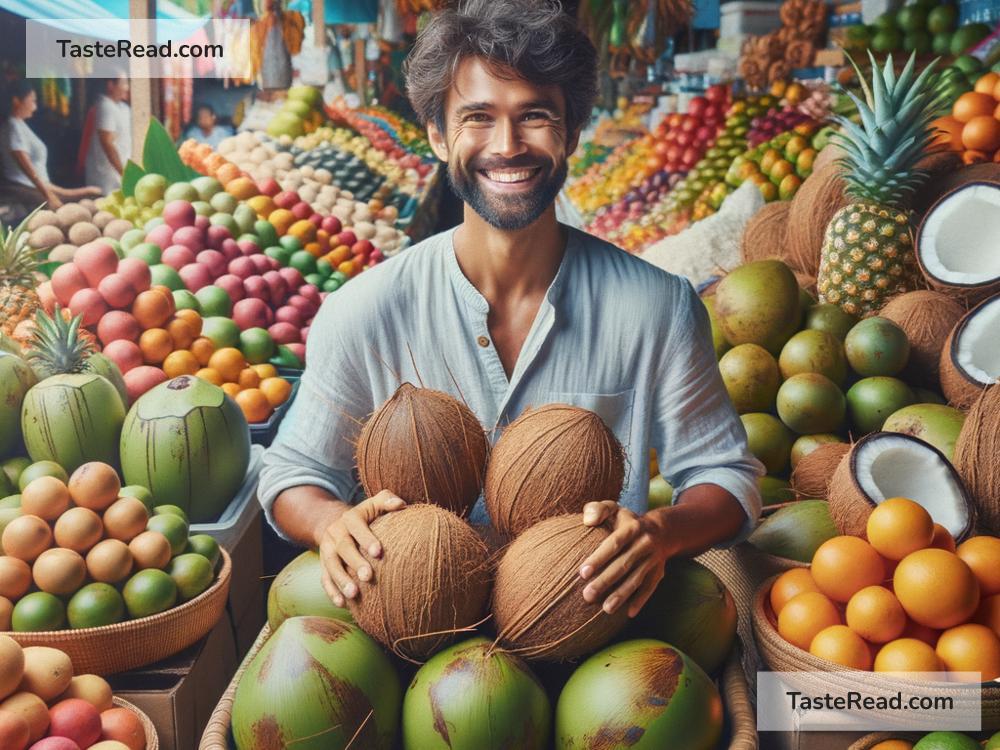How Coconuts Became Symbols of Abundance
Throughout history, nature has been a powerful teacher, guiding humanity with its symbols and lessons. Among its many gifts, the humble coconut has stood out as a unique symbol of abundance. From tropical islands to bustling cities, coconuts seem to carry a message: life is full of resources just waiting to be discovered. But how did this simple fruit become such a meaningful sign of plenty? Let’s dive into its journey.
Nature’s Treasure Chest
The coconut is no ordinary fruit. It is like a treasure chest packed with goodness. Each part of the coconut is useful, making it truly special in the world of plants. The outer shell is tough and acts like a natural container, while the water inside is refreshing and full of nutrients. The white flesh, known as coconut meat, is packed with energy and can be eaten raw or turned into oils, milk, and cream.
For thousands of years, people living near tropical coasts have depended on coconuts for survival. In places where food and clean water could be scarce, coconuts offered a dependable source of nutrition and hydration. The fact that every part of the coconut could be used—whether for food, building materials, fuel, or even ropes—made it more than just a fruit. It became a symbol of nature’s generosity.
A Global Journey
Coconuts are believed to have originated in Southeast Asia or near the Indian Ocean. But thanks to their ability to float on water, coconuts traveled across oceans and spread to distant shores. With their hardy shells, coconuts could survive long trips, landing on new beaches, and growing into tall, strong coconut palms. They thrived wherever they landed and became an essential part of life in tropical regions.
As humans began exploring the world and trading across continents, coconuts followed suit. They became a well-known fruit in places like Africa, the Caribbean, the Pacific Islands, and South America. With their association with tropical climates and their ability to prosper in difficult conditions, coconuts grew into symbols of resilience and plenty.
The Coconut in Culture and Tradition
Coconuts don’t just provide food and shelter—they’ve found a place in human culture, traditions, and beliefs. In many parts of the world, coconuts are considered sacred and are used in religious ceremonies and celebrations.
For example, in Hindu traditions, coconuts are offered to gods in temples as a way of seeking blessings. Breaking a coconut can symbolize breaking through barriers or starting anew, which ties back to the idea of abundance and possibilities. Similarly, in Polynesian cultures, coconuts are celebrated in songs, dances, and myths. They are considered gifts from the gods, representing life and prosperity.
The practical uses of coconuts have also influenced how people view them. A coconut tree is often called the “Tree of Life” because it provides everything a person might need to survive. This image of the coconut as a life-giving resource has made it a lasting symbol of abundance in many cultures.
Modern-Day Coconut Craze
In recent years, coconuts have gained even more popularity worldwide. Coconut water has become a trendy health drink, while coconut oil is praised for its benefits in cooking, skincare, and haircare. Coconut-based products fill shelves in grocery stores and beauty shops alike, proving that this fruit continues to be seen as valuable.
Social media has played a role in giving coconuts their modern fame. Pictures of tropical vacations often feature coconut palm trees or people sipping fresh coconut water straight from the shell. This association with paradise and relaxation contributes to the idea of coconuts embodying plenty and richness.
Lessons from the Coconut
The story of the coconut teaches us that abundance doesn’t always mean having endless wealth or resources. Instead, it reminds us to take a closer look at what’s already around us. Like the coconut tree, we can learn to make the most of what nature provides. A single coconut can offer food, drink, and materials to build shelter, giving us everything we need to thrive.
It also reminds us to share. Coconut trees grow in bunches and drop their fruit generously, creating a natural cycle of abundance. By thinking about the ways we can share our resources, time, and talents with others, we may discover that abundance can spread.
Conclusion: The Coconut’s Simple Power
Coconuts have come a long way from being simple fruits found on tropical beaches. Through the centuries, they have come to represent abundance in all its forms—whether through survival, cultural significance, or modern-day health trends. Their ability to provide so much from such a small package inspires us to view the world differently, finding value in even the humblest of things.
The next time you crack open a coconut, take a moment to think about its story. It’s not just a tasty snack—it’s a reminder of nature’s endless generosity and the abundant possibilities life offers. Just like the coconut, we all have something to give and share, making the world a richer and brighter place for everyone.


